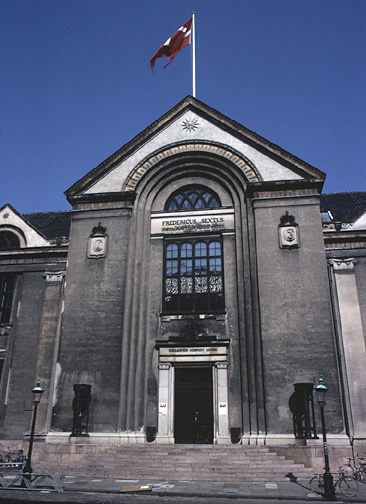
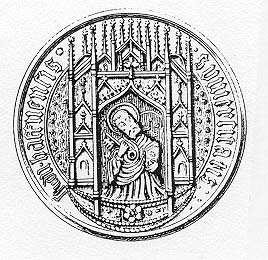
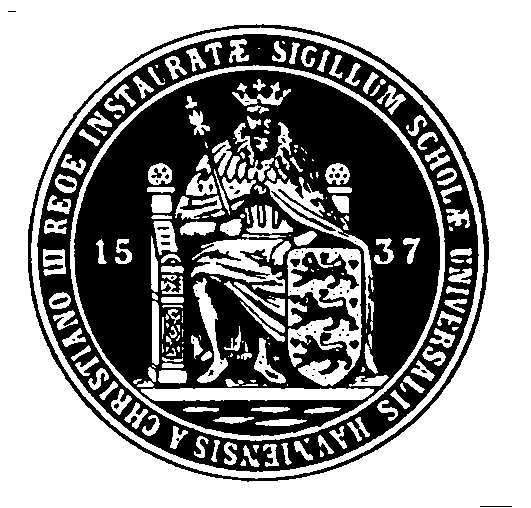
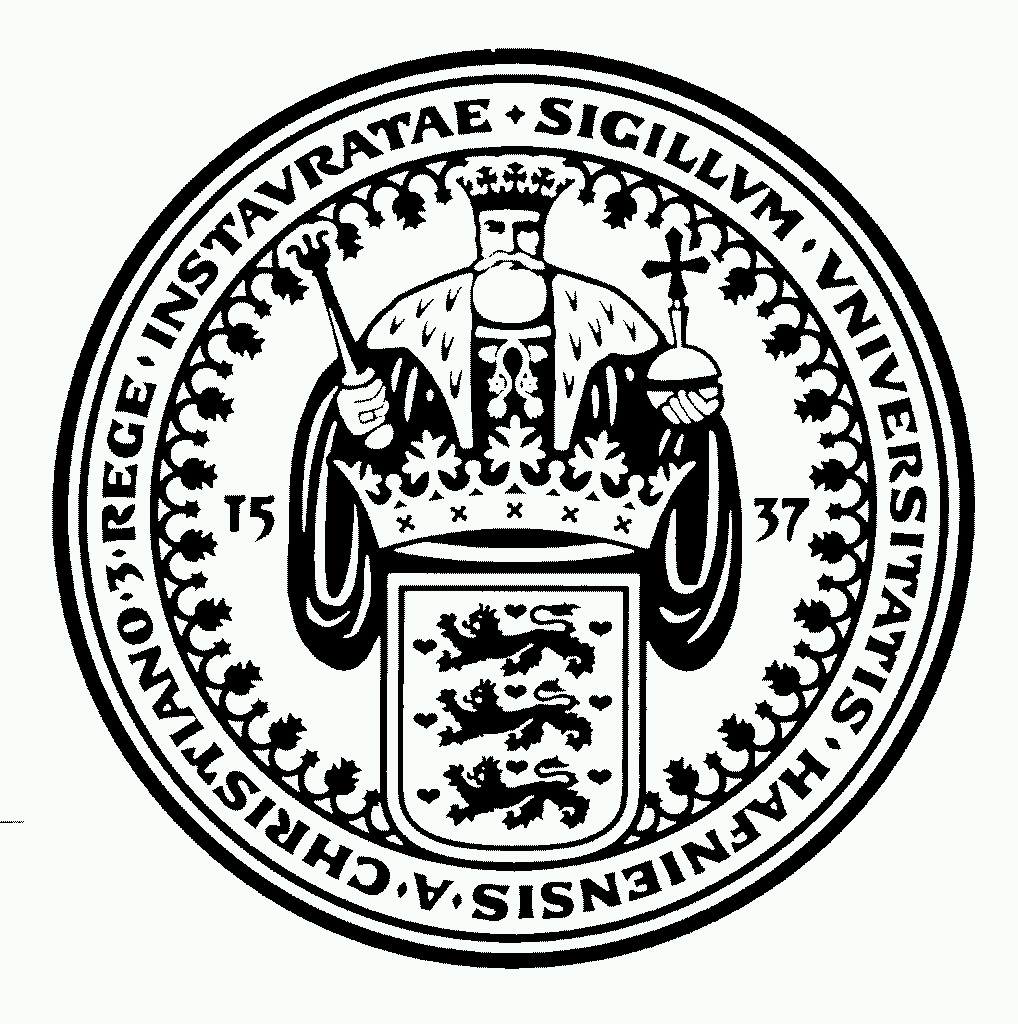
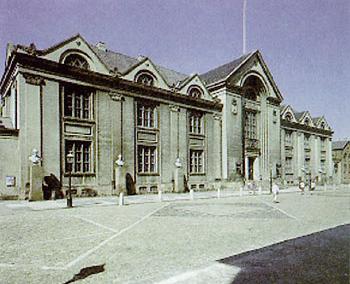
Seals of University of Copenhagen through time flanked by the entrance and the front of the University. The first seal is the original from 1479. The second was used in the period 1820-1894.
History of University of Copenhagen
1479: The University of Copenhagen is the first university to be founded in Denmark. The University is a centre of Roman Catholic theological learning, but also has faculties of Law, Medicine and Philosophy.
1537: The University is re-established after the Reformation, now as an Evangelical-Lutheran seminary. The present seal of the University dates from this year.
1569: King Frederik II founds the 'Kommunitet' (the Community), which provides 100 students with free food. In 1623 they are also given free accommodation by King Christian VI at Regensen, the royal hall of residence.
1675-1788: Introduction of degree examinations: Theology (1675), Law (1736), and in 1788 all faculties.
1807: The British bombard Copenhagen; most of the University buildings are destroyed. The main assembly hall of the University is temporarily moved to Regensen.
1836: The new main building of the University is inaugurated. Extensive building work continues until the end of the century. The University Library, the Zoological Museum, the Geological Museum, the Botanical Gardens and greenhouses, and the Technical College.
1842-1850: The faculties are restructured: The University Faculty of Medicine and the Academy of Surgeons merge to form the Faculty of Medical Science (1842); the Faculty of Law is reorganised and becomes the Faculty of Jurisprudence and Political Science (1848); the Faculty of Mathematics and Science is separated from the Faculty of Philosophy (1850).
1877: The first female student is enrolled at the University.
1960-1980: Explosive growth. Student numbers rise from about 6,000 to about 26,000 with a correspondingly huge growth in the number of employees. Large new university buildings include the new Zoological Museum, the H.C. ěrsted and August Krogh Institutes, the building complex at Amager and the Panum Institute.
1990-1993: New educational structure. The Bachelor program is made mandatory in virtually all subjects.
1993: New University Statute promulgated, one aim of which is to simplify and strengthen the management structure and the autonomy of the University.
1996-: Plans for new buildings, including for the Faculty of Humanities at Amager (ěrestaden) and a Biotechnology Centre, are approved.